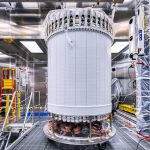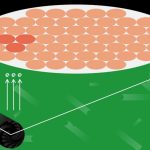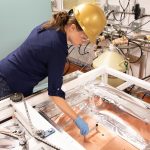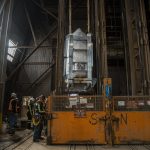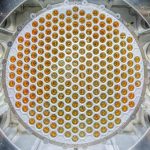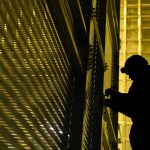LZ
From Forbes, Oct. 30, 2019: Dark matter was proposed in the 1930s and has eluded detection for nearly a century. However, an advanced and high-tech detector called LUX-ZEPLIN has just been installed that might change all of that. Fermilab scientist Don Lincoln gives an overview of the experiment.
The cryostat for Berkeley Lab’s LUX-ZEPLIN experiment — the largest direct-detection dark matter experiment in the U.S. — is successfully moved to its research cavern. This final journey of LZ’s central detector on Oct. 21 to its resting place in a custom-built research cavern required extensive planning and involved two test moves of a “dummy” detector to ensure its safe delivery.
As she grew up in the small town of San Pellegrino in the Italian Alps, three things conspired to make Maria Elena Monzani a physicist: a fascination for outer space, a Nobel Prize and a nuclear disaster. Now she prepares an international team to search for clues to one of the biggest scientific mysteries.
From STFC, July 17, 2018: Rutherford Appleton Laboratory delivers components for the LZ experiment in the Sanford Underground Research Laboratory.

